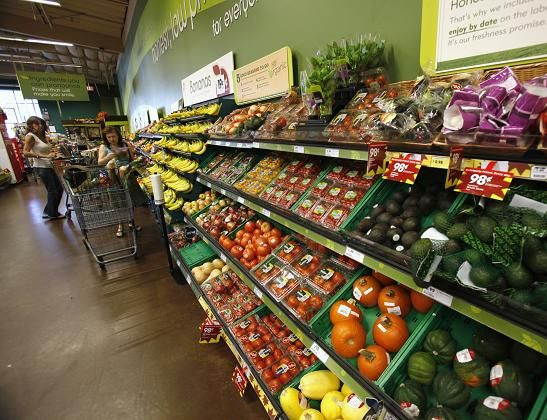Exclusive Preview: Supermarkets Must Digitize Groceries To Attract Young And Wealthy: Research Survey

Rich and young Americans will lead consumers into an increasingly broad adoption of online grocery shopping, which U.S. supermarkets must quickly adapt to, according to a major new survey given to the International Business Times.
Wealthy shoppers and Millennials together represent a fifth of all grocery shoppers, and are the two most likely groups to shop online, according to the report by leading retail consultancy Brick Meets Click, which is coming out in early October.
High earners seek rare natural, organic and artisanal products, and will buy them online to save time. Millennials are already used to online shopping for everything else, but will be more sensitive to added delivery costs.
The market for online grocery shopping will expand to 11 percent of U.S. grocery spending by 2023, up from a current 3.3 percent slice, the report predicts. Currently, 10 percent of U.S. grocery shoppers regularly buy food and produce online.
The report’s findings are based on a 2013 survey of more than 22,000 shoppers across six retail brands.
But supermarkets must strategize before they convince the remaining 80 percent of shoppers to come online. Buying groceries online must no longer cost more than 10 percent over traditional shopping cart totals before that mass market will be cracked, Brick Meets Click principal Bill Bishop told IBTimes.
Bishop estimated that current price differences in cities like New York range from 15 to 20 percent, with online shopping costing more thanks to complex distribution and delivery models.
“If the price difference is higher than 10 percent, it’s going to require scrutiny, and may be a real hard decision,” he said. “But when it drops below 10 percent added cost, we’re getting into rounding errors.”
Although a tenth of the market migrating to online groceries may not seem like much, Bishop said the impact on notoriously thin profit margins in the industry could be severe.
“There will be markets that will experience significant disruptive impact, if online goes over 10 percent,” he said.
In certain markets, like tech-savvy San Francisco, online grocery already accounts for 6 percent of total spending, according to Bishop. San Francisco has seen a bevy of new online grocers, like Instacart and Good Eggs, alongside ventures from Safeway Inc. (NYSE:SWY).
Amazon.com Inc. (NASDAQ:AMZN) was the most popular single source for online grocery purchases, serving 39 percent of online shoppers, compared with 28 percent by all other grocery retailers.
Even shoppers frequenting their favorite traditional retailers, which also offered online services, preferred Amazon for online groceries, a result Bishop found remarkable.
Amazon Fresh’s expansion from Seattle to other markets may eventually include New York, though it’s now unclear how much of an immediate threat a rollout poses to traditional supermarkets.
Other digital supermarket issues, like the use of digital coupons, already adopted by heavyweights like the Kroger Co. (NYSE:KR), are addressed in the report. Supermarkets don’t yet fully appreciate how digital platforms can build a loyal customer base, the report found.
The survey sampled dozens of urban and rural markets across several regions, including the Midwest and Northeast United States. Northern California, and especially the Bay Area, saw the highest slice of customers now buying groceries online.
Bishop declined to specify the exact markets or retailers involved in the survey.
The U.S. food retail industry is worth about $600 billion, according to UBS AG (VTX:UBSN). Besides requiring increasingly digital grocers, American consumers are also developing a taste for natural and organic foods.
© Copyright IBTimes 2024. All rights reserved.






















